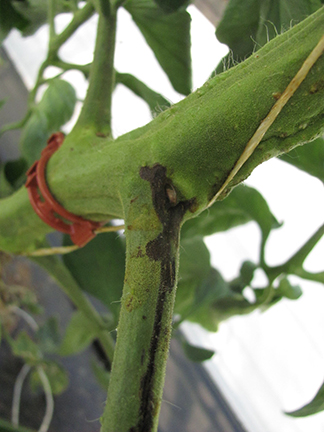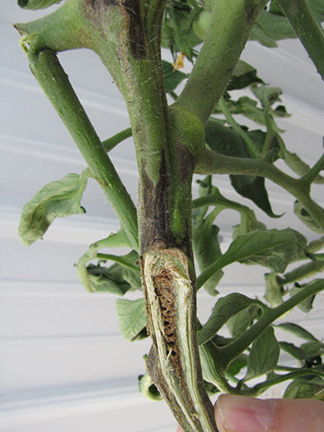This disease has been reported in two different greenhouse situations. Although the disease is not usually economically important, a brief review of the disease is offered here to help tomato growers differentiate pith necrosis from more important problems.
Tomato pith necrosis causes dark brown streaks on tomato stems and leaf petioles (Figure 1). Often stems may appear twisted and distorted. When cut open, the stem may appear discolored and chambered (Figure 2). Eventually, the affected plant may become stunted and wilt. Tomato pith necrosis is usually found in greenhouses or high tunnels.
Because the plant has a discoloration in the stem, it is sometimes confused with bacterial canker, a much more serious disease. A comparison of the two diseases can be found at https://ag.purdue.edu/arp/swpap/Documents/pith-necrosis%20.pdf.
It is not clear how pith necrosis spreads or enters the tomato plant, but it is probably best to remove affected plants and avoid using pruning equipment on diseased plants. When removing diseased plants, it is always best to leave as little of the plant behind as possible. A landscape cloth covering can help to keep crop residue out of the soil.
Perhaps since pith necrosis is not economically important and does not appear to spread quickly, not much is listed for the management guidelines. To manage tomato pith necrosis, avoid low night temperatures and excessive nitrogen levels; reduce high humidity in the greenhouse or high tunnel. General pest management guidelines can be found in the Midwest Vegetable Production Guide for Commercial Growers 2015 (mwveguide.org). This article was originally published at veggiediseaseblog.org.

